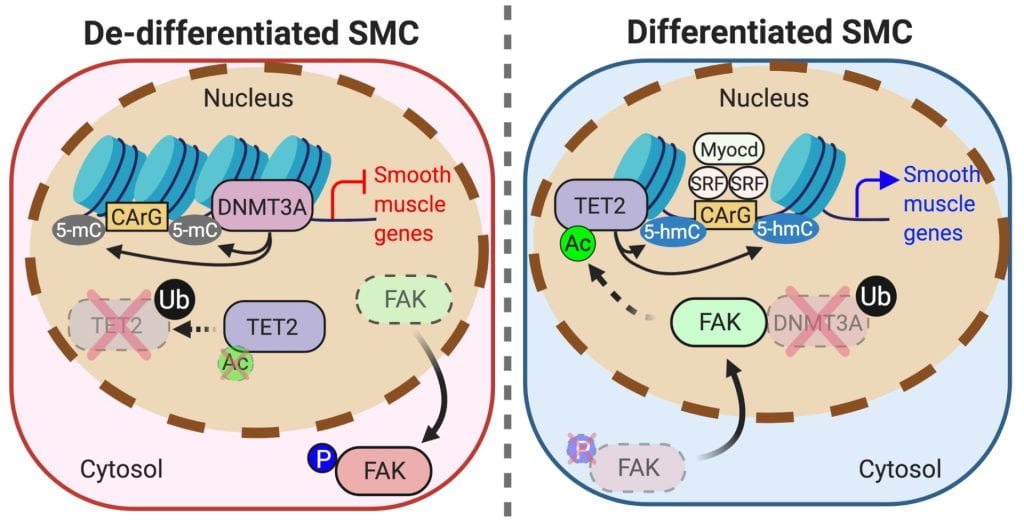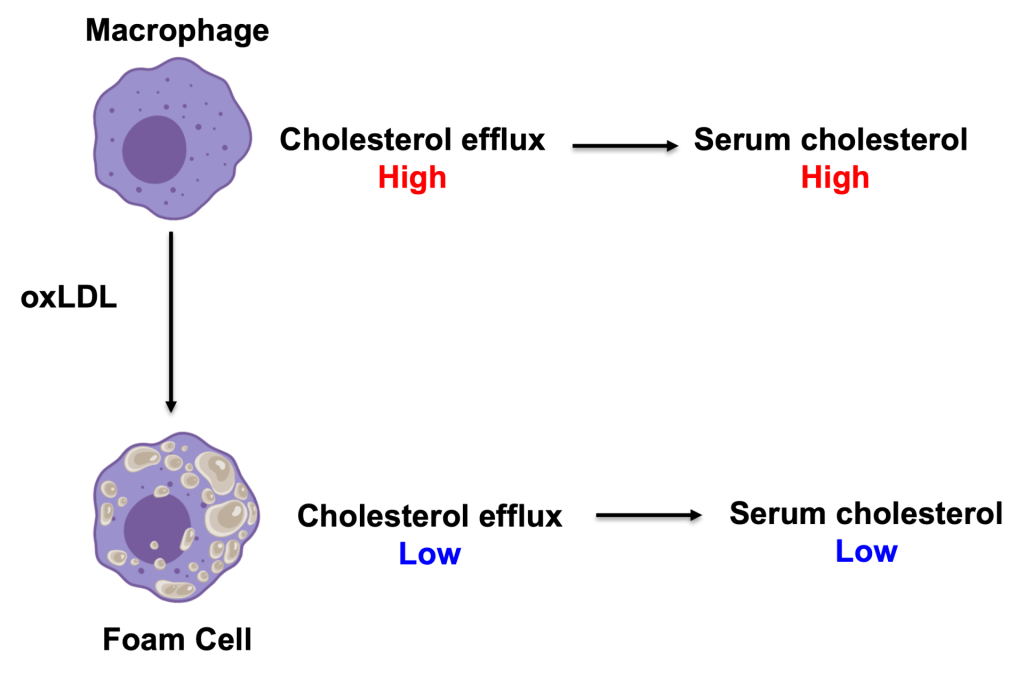FAK inhibition blocks phenotypic switching of smooth muscle cells (SMCs)

Atherosclerosis is caused by the build-up of plaque in the arteries. If it is severe enough, this plaque build-up is capable of causing myocardial infarction (heart attack), stroke and blood clots. SMCs line the arteries, allowing the nervous system to control blood pressure. In a healthy SMC, FAK is located in the nucleus where it is inactive. However, when the SMC sustains an injury, FAK is shuttled out to the cytoplasm where it becomes active. We have noticed increased levels of cytoplasmically-localized and active FAK in atherosclerotic lesions.
When FAK is localized in the cytoplasm and active, it causes the SMCs to de-differentiate into a proliferative genotype known as ‘synthetic’ SMCs. These cells proliferate much more readily than healthy SMCs and contribute to atherosclerosis by narrowing arteries even further.
FAK inhibition increases cholesterol efflux from foam cells and alleviates atherosclerosis
One area we study is the role of focal adhesion kinase in the build-up of cholesterol in atherosclerosis. Overabundance of cholesterol-laden macrophages, known as foam cells, is the root cause of atherosclerotic pathology. Statins, the current treatment targeting foam cells, fail to reach desired lipid levels in 50% of patients. Therefore, new treatment options are needed to combat atherosclerotic disease. In particular, we study how FAK inhibitors (FAK-I) effect the release of cholesterol from macrophages.

When treated with FAK-I, we noticed that overall cholesterol serum levels increased, which is indicative of high cholesterol efflux from macrophages. Therefore, treatment of macrophages with FAK-I increases cholesterol efflux which prevents foam cell formation. FAK-I achieves this affect by increasing expression of cholesterol exporting proteins and other proteins as well.
